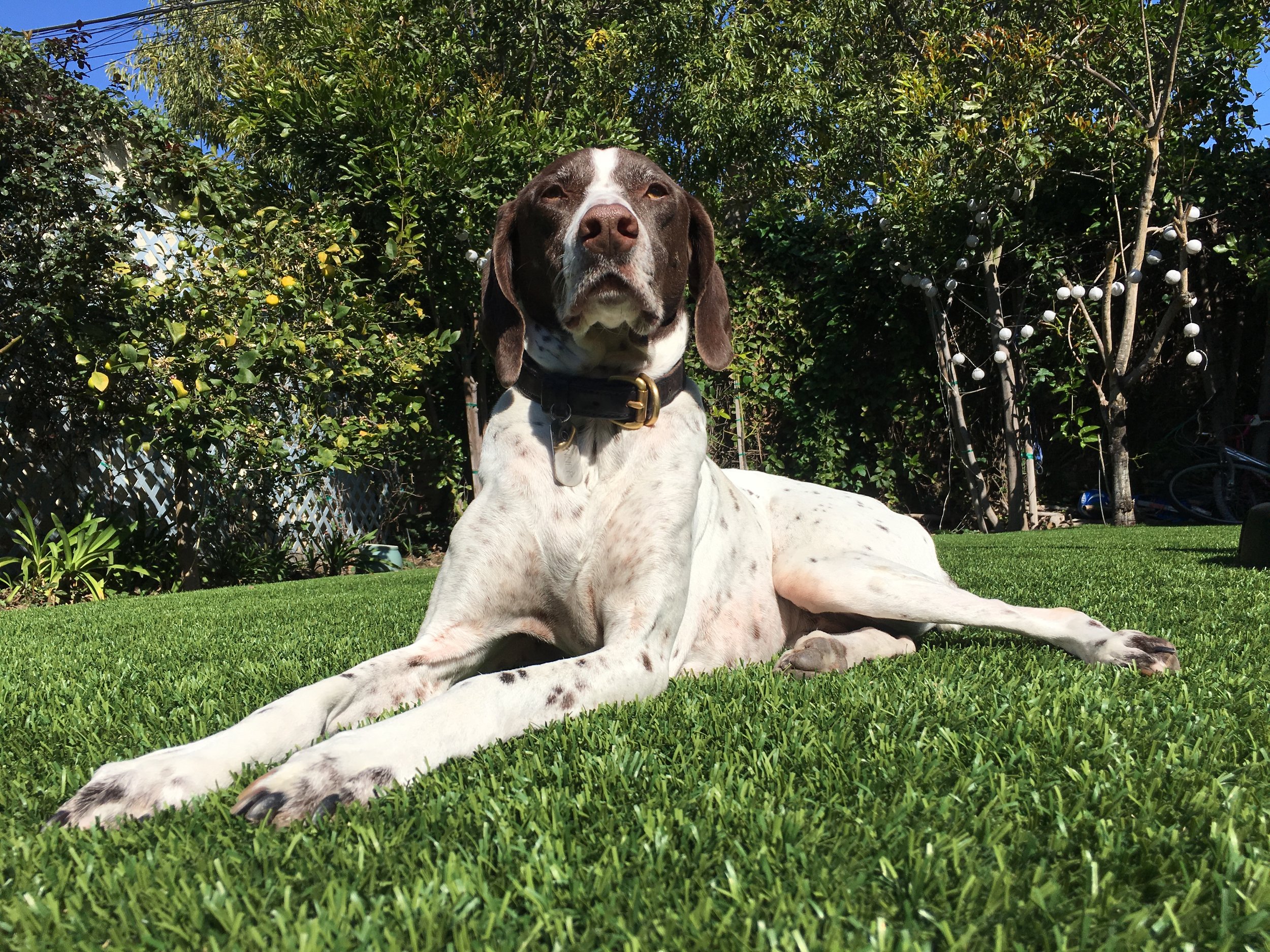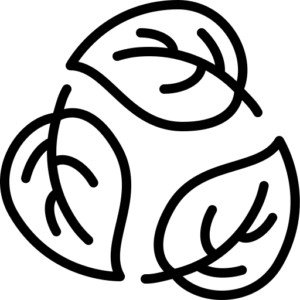Staying On Top of Your Routine Cleaning
Ensure your pet's safety and enjoyment with a pristine artificial grass lawn. While it offers a secure and stimulating space for your furry friend, pet turf requires regular deep cleaning to eliminate odor and cleanliness.
Step One:
Prepare essential supplies for maintaining your synthetic turf.
Equip yourself with:
1.A plastic bag /pooper scooper 2. A garden hose 3. A mild soap and water solution 4. A synthetic turf-safe brush 5. Turf deodorizing spray
Utilize a standard garden hose instead of a power washer and opt for a brush with soft synthetic bristles. Always double check that any cleaning or deodorizing solutions are turf-safe or specifically formulated for artificial grass applications.
Step Two:
Start the cleanup process by addressing solid waste on your synthetic turf surface.
Whether it's dog waste, leaves, twigs, or other debris, ensure thorough removal.
Solid waste not only flattens synthetic grass blades over time but can also impede proper drainage during hose-down sessions. Therefore, prioritize clearing visible debris and waste before proceeding to the next phase of maintenance.
Step Three:
Hose down your synthetic grass lawn to eliminate liquid waste and debris
Use a standard garden hose instead of a pressure washer, especially if your lawn contains infill.
Rinsing effectively dislodges dirt, debris, and bacteria buildup from pet waste, ensuring odor elimination and a safe environment for your entire family. This step is essential for maintaining the cleanliness and hygiene of your lawn.
Step Four:
Address stubborn stains and marks by with a mild soap mixture and brush.
Create a solution by mixing equal parts soap and mild dishwashing liquid, then apply it to the affected area. Allow the solution to soak for several minutes before gently scrubbing the turf in a circular motion using a turf-safe brush. Once the dirt or staining is lifted, thoroughly rinse the area and let it dry completely.
Step Five:
Utilize a pet deodorizer spray with anti-microbial properties for a fresher and odor-free synthetic grass environment.
These specialized deodorizers effectively target ammonia, the primary odor culprit in pet urine, eliminating unpleasant scents at their source. By inhibiting bacteria growth, turf disinfectant ensures a lasting freshness while protecting your pet turf from harmful pathogens.
IMPORTANT: When applying a deodorizing solution to your artificial grass lawn, use a heavy stream setting on the hose applicator rather than a spray. This ensures ample volume to fully encompass the surface, allowing the liquid to penetrate the backing and drain thoroughly. It is recommended to perform this process once a week in urine-prone areas.
Top Performing Artificial Grass Products
k9 Kennel Grass
K9 Natural
K9 DuraMax
SoftTech Peet
Important Artificial Grass Installation Information
Preparation and Sub Layers For Artificial Grass
Excavation: A minimum depth of 3-4 inches is required to ensure appropriate flow-through rate for the artificial grass, preventing water pooling and promoting efficient drainage.
Weed Barriers: While weed barriers are commonly used to prevent weed growth, they may not be suitable for artificial grass pet systems. In pet systems, weed barriers can potentially block drainage and hold in urine, leading to odor and hygiene issues.
Optimal Infill in Artificial Grass
Silica Sand Caution: Avoid using silica sand as infill, as it can absorb dog urine and lead to surface heating.
Deodorizer Infill: Zeolite, a volcanic ash, is a reliable material for deodorizing ammonia from pet urine on artificial grass.
Antimicrobial Infill Benefits: Quartz granules coated with an antimicrobial compound help eliminate odors and maintain cooler
The right base material for your artificial grass surface.
The base material is crucial for the success of your artificial grass installation.
Class 11 Road Base: A durable crushed rock primarily derived from grinding concrete and separating gravel from solid cement. It offers excellent drainage capacity and durability, making it an ideal choice for artificial grass and pet system installations.
Decomposed Granite: An organic material known for its ease of grading but poses challenges in drainage and weed control due to its high nutrient composition. It should be avoided to prevent potential issues with drainage and weed growth.
Backing System for Your Artificial Grass Selection
With advancements in artificial grass technology, not all manufacturers have kept pace with improvements in backing systems.
Perforated Backing: Perforated backing, the first-generation system, offers a drain rate of 32" per hour but may retain dog urine and limit drainage efficiency in the case of rapid rain fall.
100% Permeable Backing: Newer backing systems are 100% permeable, allowing for drainage throughout the entire surface. These systems demonstrate superior drainage capabilities, higher drain rates, and ease of cleaning, making them the optimal choice for all applications.













